These notes outline and explain interior design Presentation Boards Layout tips and techniques and how to create eye catching Presentation Boards, also know as Concept Boards. Presentation Boards are used by interior designers but also by architects, graphic designers, game designers and concept artists in order to present their ideas, drawings and designs to clients, co-workers or their boss. Lets look at the key points to consider when planning your presentation board.
Presentation Board Content
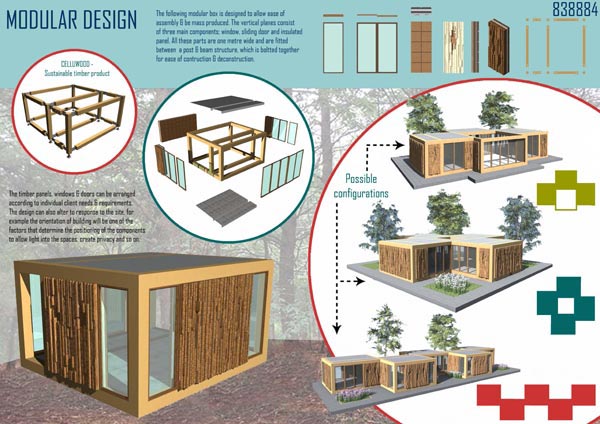 |
| A Quality Example Of A Presentation Board |
Conceptually speaking, there is no reason to make a beautiful presentation board of bad content. Content is Key. A presentation is an opportunity to show your commitment to finish through the level of precision with which you present your ideas.
It is usually effective to help a viewer get quickly oriented to the presentation by providing a large summary image, such as a central image of the main characters like in movie posters or a rendering of some kind of overview perspective like in architectural presentation boards.This should be positioned at the first point of visual focus, which should be about the same as the beginning of the reading order.
Consistency In Presentation Boards
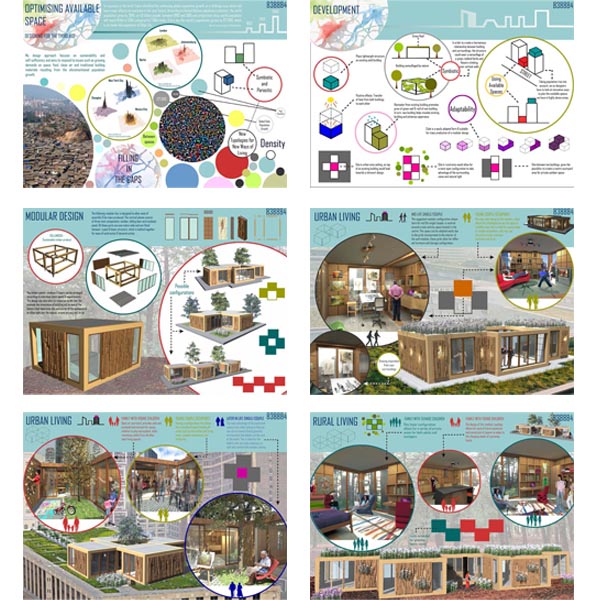 |
| Consistency Across Multiple Presentation Boards |
In most situations an interior designer will be required to present numerous presentation boards detailing a variety of aspects of the design proposal. For example he/she may present mood boards, materials boards, colour scheme boards, technical specifications, 3D drawings or computer rendering etc. It is of vital importancew that despite containging different content that these boards are still consistent in their appearance so it is obvious they are part of the same project. This consistency can be achieved using some or all of the following things...
- Presentation Boards should all be the same size and orientation (landscape/portrait)
- Common colour scheme
- Same font size, colour and style for titles and lables
- Same Layout/ Grid patern of content
- Consistent style and size of images
- Common Logo/Insignia on each board
Presentation Board Titles & Labels
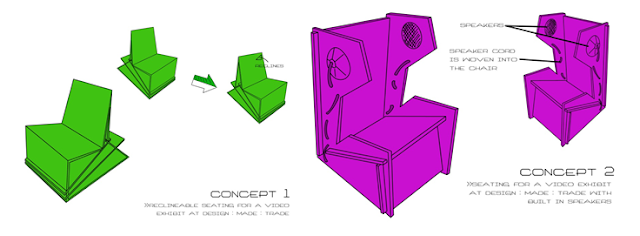 |
| Titles And Labels Are Very Important For A Good Presentation Board |
This is a very simple and straight forward measure which will enhance your presentation. Sometimes we are so enveloped in our own project that we forget the viewer will know little or nothing about it. The viewer therefore needs some help and direction in understanding the content of your presentation board/image/website. Titles and labels will quickly and easily introduce the viewer to the message you are trying to get across. The title block in the design drawings should have the Project name, Drawing/sheet title, Scale and Designer's name.
Grid Layout In Presentation Boards
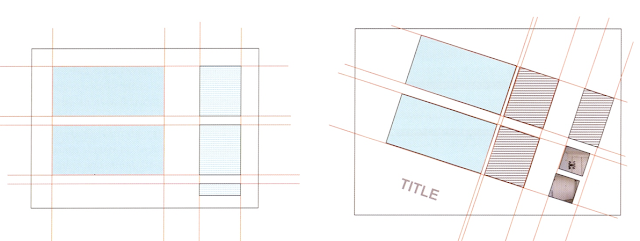 |
| Plan Out The Grid Layout For Your Presentation Board |
Decide on the orientation and the size of the sheet and have a grid system to you layout, this will aid the flow of the story that you are trying to tell through the presentation board and will make it easier for the viewer to 'read' it.
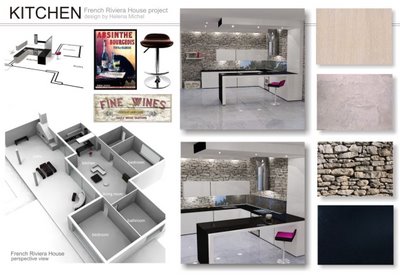 |
| A Sample Presentation Board Using A Grid Layout |
Clear, simple alignment of compositional elements is usually a good thing. you should contradict this only for very good reasons. For example, complex content or data is often represented in tables in order to simply it. Tables are simply horizontal and vertical alignment of data. In the same way your content can be simplified and enhanced in a clear vertical or horizontal presentation.
"Reading" A Presentation Board
Left to Right or Center Outward reading order in Presentation Boards
Either is fine, it depends on the content that is being presented. Choose a format which best suits your content. Center outward layout is generally best used where there is a central theme or concept around which the rest of the content is based. However, it is important to be clear about which approach you are taking.
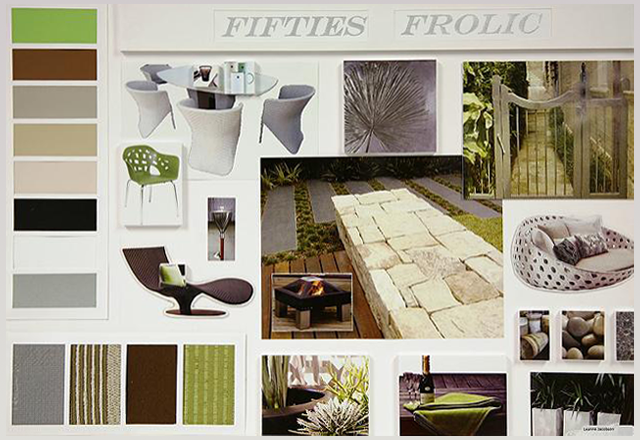 |
| Centre outward visual reading order seen in this presentation board |
In general, left-to-right reading order implies a left-justified composition where content is arranged in some sort of order/chronology, and similarly, a centre-outward reading order implies growth or development of ideas from the centre outwards.
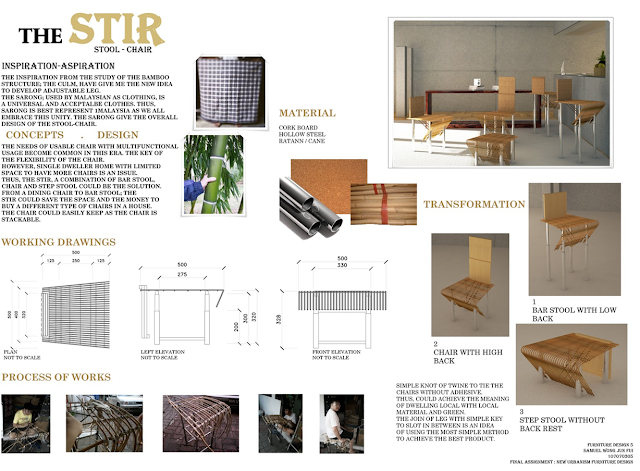 |
| Left to right visual reading order seen in this presentation board |
Top -> Down reading order in Presentation Boards
Roughly speaking, this should be a given, although a certain amount of reading upward and downward from powerful drawings in the middle (like a set of house plans) can make good sense. Unless this is the case, avoid straying from this simple rule.
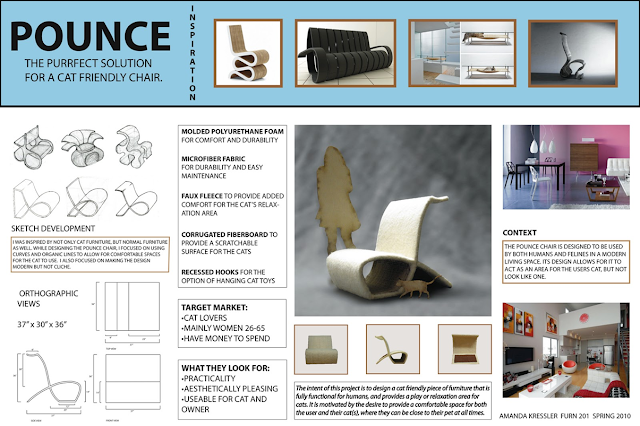 |
| Town Down Reading Order In A Presentation Board |
Presentation Board Weighting
Is the composition weighting neutral, or a little heavier toward the bottom? Presentations which have a center-of-visual-gravity a bit below mid-height tend to be more aesthetic than those with other weightings. The use of a "footer" can also enhance your presentation. A footer is an area along the bottom of your image or presentation which includes some minor data, such as your name and class for a presentation board or secondary links for a website. The footer will be a darker colour than the rest of the image/board and is used to weigh down the presentation and stop the eye of the viewer from straying of the page/board/screen.
Framing Images In A Presentation Board
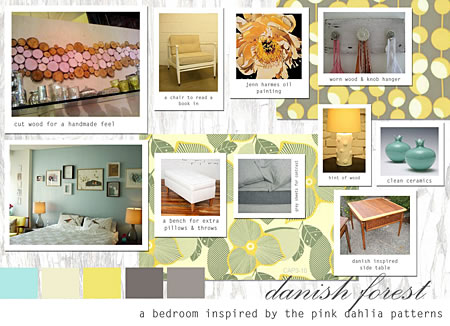 |
| The Images In This Presentation Board Have Been Framed To Help Highlight Them Against The MIxed Background |
Don't stick drawings or images directly to a presentation board. Instead, mount them on a different colour card or sheet to frame them. Similarly in graphic or web design it is better to have a border or frame around the content to keep the viewer focussed on your image.
For physical presentation boards you can also lift the image from the board by using some foam mounting board. When using the foam board, cut it to the exact size of the image, don't frame using foam board. This will give the mounted image a greater sense of importance and add subtle levels to the presentation board which will enhance the overall aesthetic.
Stand Back From The Presentation Board
Finally, stand back from your image/board/screen and view it from the distance it is likely to be viewed. When viewed from a full range of reasonable viewing positions, do all the drawings read clearly? is the text readable? Does the whole presentation hang well together? If so, great. If not, make any necessary changes.
What Next?
You now know the theories and techniques involved in designing a quality presentation board so why not try to put it into practice with our step by step guide on
how to create a concept board.








 Reviewed by Opus Web Design
on
12:54
Rating:
Reviewed by Opus Web Design
on
12:54
Rating:
 Reviewed by Opus Web Design
on
12:54
Rating:
Reviewed by Opus Web Design
on
12:54
Rating:















